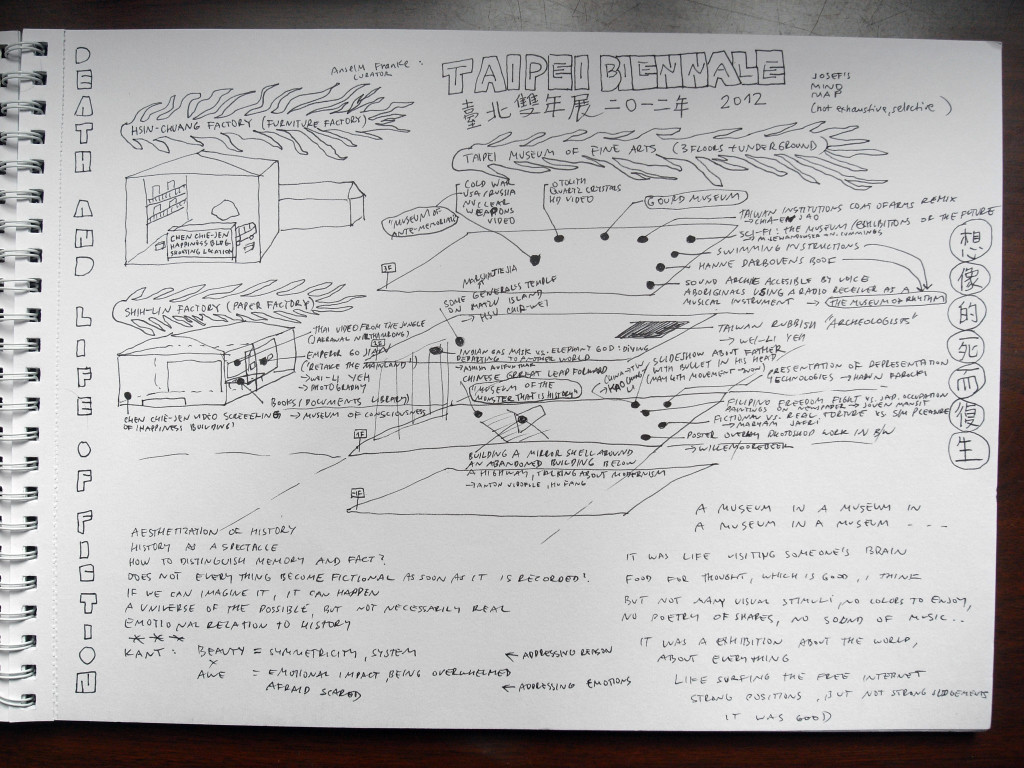Taipei Biennial 2012 台北雙年展2012 / Death and Life of Fiction 想像的死而復生
Curator: Anselm Franke / September 2012 – January 2013
 The Taipei Biennial is heavy in meaning. It is almost like entering someone’s brain, or like opening a large encyclopedia of everything. The central topic is history. What is a document and what is fiction? When does the ‘real’ become an ‘imagined’ one? The exhibition includes in itself another set of exhibitions, so there is often a feeling of being inside of the inside of the inside of a museum, like a set of Russian dolls. The meaning and interpretations can keep unfolding forever. The exhibition presents huge amounts of materials to browse through, to sit down and watch, read… take some thoughts home.
The Taipei Biennial is heavy in meaning. It is almost like entering someone’s brain, or like opening a large encyclopedia of everything. The central topic is history. What is a document and what is fiction? When does the ‘real’ become an ‘imagined’ one? The exhibition includes in itself another set of exhibitions, so there is often a feeling of being inside of the inside of the inside of a museum, like a set of Russian dolls. The meaning and interpretations can keep unfolding forever. The exhibition presents huge amounts of materials to browse through, to sit down and watch, read… take some thoughts home.
The main location is as usually the Taipei Museum of Fine Arts and this is where the main ‘brain’ of the exhibition is. It will take a long, almost infinite time to go through all the exhibits in detail, and if one really intends to study everything in detail (and watch all the – often hour long – videos) s/he will need to come back more times. Of course one can also pick out a few pieces only, but I felt it was a pity I missed some of the pieces. Each visitor is supplied with a very handy guidebook that has two-page descriptions of each artwork – very useful.
Besides that there are some exhibits in a paper factory near Shih-lin MTR station and the film set of Chen Chie-jen’s movie ‘HappinessBuilding’, far away in Hsin-chuang. While the movie itself is done in his usual style (slow with little color) and touches on his usual topics (labor rights, disadvantages members of society), the actual shooting location turned into a large-scale installation which includes sound recordings (and one can watch the movie there too) is actually quite impressive, and in contrary to the movie, one can walk through at his own pace.
Overall, this biennial is about art as the intellectual capacity to take in and reflect on humanity. There are few works that would deal with the formalist or visual aspects of art. The topics on display should be in the interest of every human being; however it can cause a slight shock to the Sunday afternoon museum visitors expecting an aesthetic elevation of spirit. Depending on personal interests and likes, this show can leave one with a confusion and headache, or with a feeling of fulfillment and satisfaction. As an exhibition, it is well done and worthy one, or even more visits.